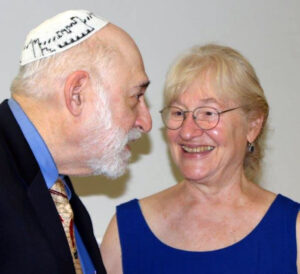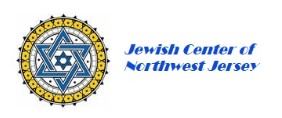Once In a Lifetime
How often do you hear that expression “once-in-a-lifetime opportunity”? And is it ever really an accurate description of what is about to take place?
| On Sunday, June 14, 2015, about thirty members of Washington’s Jewish Center of Northwest Jersey, young and old alike, aged 14 through 94, experienced precisely that once-in-a-lifetime occasion: the writing of a sefer Torah. To understand the full import of what occurred, one should be aware that in Judaism the writing of a Torah scroll is one of the 613 mitzvot (commandments) that a Jew strives to fulfill during a lifetime: it counts as either the first or the last mitzvah, depending on which tradition you follow. “And now, write for yourselves this song, and teach it to the Children of Israel. Place it into their mouths, in order that this song will be for Me as a witness for the children of Israel” (Deut. 31:19).The writing of a full scroll takes a professional sofer, or scribe, a year or more – a feat that is beyond the abilities of an untrained person. Rabbinical tradition teaches that the writing of a single letter in the scroll is equal to the writing of the full scroll for purposes of fulfilling the commandment; in lay terms, it’s the intent and the thought that count. How could we do this without wreaking havoc on the elegant calligraphy of the Torah scroll, and how is it that we have the opportunity? |

Sofer Greenspan withSharon Herson |
Let’s take the second part of the question first. Three years ago, the congregation purchased a small Torah scroll in honor of the chai (18th) year of Rabbi Ellen Jay Lewis’s service as rabbi of the Jewish Center. The congregation already had two other crowned Torah scrolls, but we needed a scroll that would make the Torah more accessible to those who could not lift or easily carry 25 pounds – specifically b’nai mitzvah children and older adults.
The light-weight Torah was found, and it was decided at that time to provide members of the congregation with an opportunity to “write a Torah.” It took several years to find a sofer who could facilitate this, but the wait for was worth it. Jay Seth Greenspan, the author of Hebrew Calligraphy: A Step by Step Guide (New York: Schocken Books, 1981), is about as expert as one can be in this profession. He engaged participants, who included Rabbi Emerita Ellen Lewis and outgoing rabbi Mary Zamore, with questions about the mitzvot and demonstrated how to make a goose-quill pen from a goose feather (not something to try on your own at home).

Sofer Greenspan withEdythe |
Sofer Greenspan explained how he would hold the hand of each person, to make sure the tiny strokes on the selected letter would be exact. Before proceeding, the members of the group recited a blessing collectively, each person inserting his or her own Hebrew name. A shehecheyanu (blessing of thanks) was recited at the end of the ceremony, after all participants had taken their turn. We filled in letters at the end of the scroll, the last two “paragraphs” of Deuteronomy, and learned – or were reminded – that the last word in the Torah, Yisrael, ends with a lamed (l) and the first word in the Torah, Bereishit, begins with a bet (b). A continuum, the end and the beginning; taken together they spell the Hebrew word for heart, leb: Torah is the heart of Judaism.With the sofer’s fingers guiding us, literally holding our fingers, each person wrote the letter that was the first letter of his or her Hebrew name into the appropriate word of the line as marked by the sofer. The occasion was joyous, emotional, and probably never to be repeated within our lifetime. |
Sharon Herson
June 15, 2015 |
For more photos of this special event, visit our Facebook page.
Copyright © 2015 Jewish Center of Northwest Jersey
Last updated: September 7, 2015


